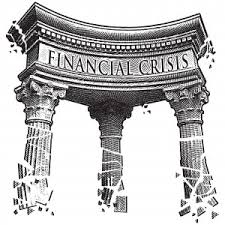
 Why I think there will be global economic turmoil ahead of us:-
Why I think there will be global economic turmoil ahead of us:-
- Global debt since the GFC has INCREASED. Almost every country has increased its debt load and globally has risen by $60 billion since 2008.
- China’s economy is slowing down because their debt levels, like the rest of the world, has increased dramatically to ramp up their production line and due to stimulus during the GFC used to build their many “ghost cities”
- This is coinciding with the world is no longer consuming as much of the products they make and their government is no longer willing to use stimulus for their economy (although they will interfere with their stock market).
- There is an oil glut due to shale oil finds in the US and no lessening of production in OPEC countries despite lower oil prices.
- Record low global interest rates mean people are looking at riskier assets and areas to make up yield, which causes real estate and stocks to rise above their actual worth.
- Low interest rates are also funding highly speculative ventures.
- Consumer debt in almost every country are at record levels.
- There have been huge amounts of baby boomers retiring every year since 2011 and will only increase as more and more boomers move from the paid work force to the retirees.
- These retirees will be looking to convert assets to cash and will become net savers instead of net spenders.
- Those retirees who don’t have any or much retirement savings will be trying to sell their houses, stocks and businesses to fill their retirement funds, but due to demographics, there are less people to buy these assets, so it will be a buyers market for this real estate, stock and businesses as more and more flood the market, thus driving down prices.
- Commodity producers used cheap credit due to low interest rates to ramp up capital works and these works programs are now finished and in production at precisely the same time that commodity prices have fallen due to a fall in demand.
- No country’s central bank can afford to raise interest rates because the global economies are so fragile that even a quarter of one per cent interest rate rise may be enough to crash the markets.
- Many countries have resorted to money printing or quantitative easing to try to stimulate the economy, but this monetary stimulus was used to bail out “too big to fail” banks and financial institutions who had engaged in risky loans and sub prime lending. This extra money did not find its way into the general economy.
- Real wages in places like the US have not risen in the last 40 years, so people are actually worse off financially than they were in 1975.
- All the monetary stimulus has done is prevented a natural deflationary cycle from occurring due to all that extra money being put into hard assets that pushed up asset prices such as stocks, real estate and art with no actual basis for the rise.
- The current global debt load is completely unsustainable and it’s getting to the point where the interest payments alone on all the debt will not be able to be paid.
- There is a chance that governments will not be able to pay their debts, or in other words, they will default on their loans, such has almost happened in the PIIGS (Portugal, Italy, Ireland, Greece and Spain) countries. Only bailouts by Central banks have stopped these sovereign defaults.
- Japan is entering its third lost “decade” of no or slow growth due to unsustainably high debts. Their stock market and real estate have not reached the highs attained during the 1990’s and their.
- Many governments face billions in unfunded liabilities to pay for pensions, disability and medical care.